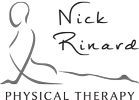Nick Rinard Physical Therapy uses McK Mechanical investigations
https://www.facebook.com/139184759454589/posts/2153787684660943/
More (formerly Mechanical Diagnosis and Therapy of Portland, PC)
(formerly Mechanical Diagnosis and Therapy of Portland, PC)
https://www.facebook.com/139184759454589/posts/2153787684660943/
Morehttps://www.facebook.com/840670342719483/posts/1705330872920088/
More
Low back pain is one of the most common causes of disability in the world. A recent study found that “Out of 291 conditions studied in the Global Burden of Disease 2010 Study, LBP ranked highest in terms of disability (YLDs), and sixth in terms of overall burden.” With a large range of different types of back pain it can be extremely frustrating finding relief from this type of pain.
Luckily there has been a large effort to find the best approach to dealing with low back pain. A 2018 study comparing healthcare costs for patients with a diagnosis of low back pain between the ages of 18 and 64. Interventions studied included differences in opioid prescription, health care utilization, and timing of PT intervention. This study found that patients who saw a PT at first had a lower utilization of high‐cost medical services (MRI, surgical intervention, emergency room visits) as well as lower opioid use.
Another study looked at the differences in long term outcomes in patients with spinal stenosis given PT or surgery. The results of this study after 2 years found that patients “did not differ significantly between patients who had undergone surgery and those who avoided surgery.” This shows that physical therapy alone is a much safer, cheaper, and equally effective choice.
Understanding your back pain and using your own body to fix itself has proven to be the least expensive and best outcome tool when dealing with low back pain. Therefore be your own advocate when dealing with new or recurring back pain and try PT first!
Frogner, B. K., Harwood, K., Andrilla, C. H. A., Schwartz, M., & Pines, J. M. (2018). Physical Therapy as the First Point of Care to Treat Low Back Pain: An Instrumental Variables Approach to Estimate Impact on Opioid Prescription, Health Care Utilization, and Costs. Health services research.
Hoy, D., March, L., Brooks, P., Blyth, F., Woolf, A., Bain, C., & Murray, C. (2014). The global burden of low back pain: estimates from the Global Burden of Disease 2010 study. Annals of the rheumatic diseases, 73(6), 968-974.
Minetama, M., Kawakami, M., Nakagawa, M., Ishimoto, Y., Nagata, K., Fukui, D., & Sakon, N. (2018). A comparative study of 2-year follow-up outcomes in lumbar spinal stenosis patients treated with physical therapy alone and those with surgical intervention after less successful physical therapy. Journal of Orthopedic Science, 23(3), 470-476.
Morehttps://www.facebook.com/271964462441/posts/10156552391062442/
Morehttps://www.facebook.com/139184759454589/posts/2132377970135248/
MoreLook for the up coming article in MapMyRun (powered by Under Armour).
Morehttps://www.facebook.com/140277053186246/posts/285374308676519/
Morehttps://www.facebook.com/139184759454589/posts/2108271199212592/
Morehttps://www.facebook.com/139184759454589/posts/2099498133423232/
MoreI’d like to share with you a recent patient success story from Nick Rinard Physical Therapy. Our story begins with a 10 year old girl (we will call her Artemis for this article) who had a disastrous landing while playing on her trampoline in her backyard. Artemis’ back injury was very upsetting to her because it occurred just a few weeks before her end of the year dance recital. She was frustrated because her attempts to participate in dance class weren’t going well despite her desire to succeed. She was unable to lift her leg above her knee level due to her back pain. Thankfully, her parents were proactive and brought her to our clinic for treatment just 3 days after her injury.
When I examined her, Artemis was having difficulty finding a comfortable position sitting on the exam table. Pain was driving her to fidget and her restlessness was creating fatigue which further aggravated her symptoms in a vicious cycle. Even her walking pattern had been altered, and she had a difficult time separating the movement of her shoulder and hip on the left side.
Artemis’ treatment plan targeted stretching of her injured muscles, restoring normal movement patterns, and building strength in her lumbopelvic stabilization muscles.
Due to timely intervention and excellent follow through with her home exercise program, Artemis made a full recovery and was able to shine on the stage for her dance recital!
So, if you or your children are being limited by injury, take a lesson from Artemis’ excellent example and seek our help sooner rather than later. We’ll get you back on your feet and performing at your best! The show must go on!
More